Solanum tarnii
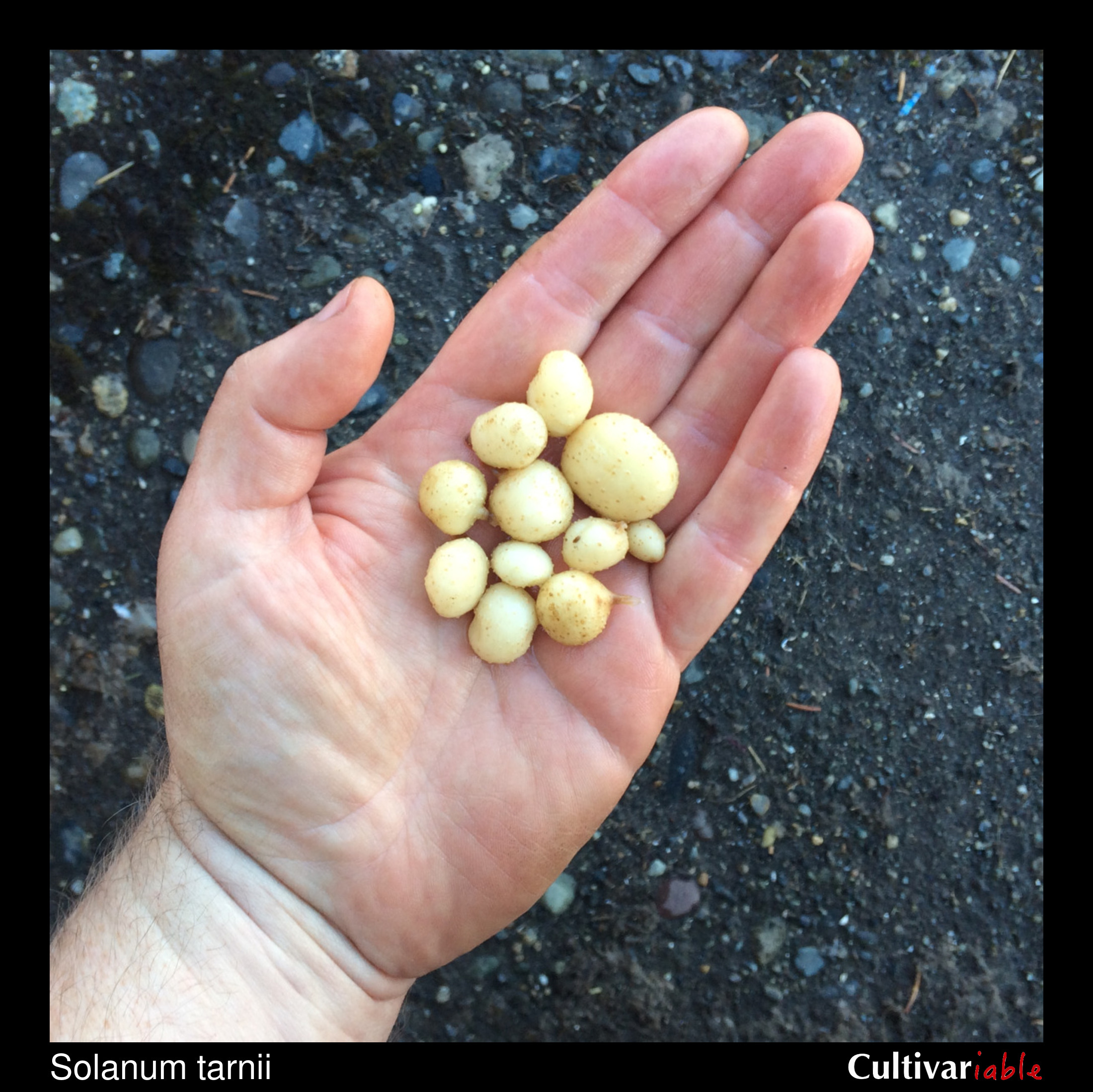
| Common Names | |
| Code | trn |
| Synonyms | |
| Clade | 1 |
| Series | Pinnatisecta |
| Ploidy | Diploid (2x) |
| EBN | 1 |
| Tuberization Photoperiod | Unknown |
| Self-compatibility | No |
| Nuclear Genome | B |
| Cytoplasmic Genome | Unknown |
| Citation | Hawkes & Hjerting: Phytologia 65: 114. 1988. |
Description
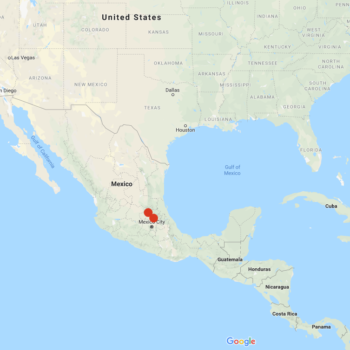
Solanum tarnii is native to Mexico, primarily Hidalgo. Plants roughly 2 to 3 feet tall. White flowers. Very little has been written about this species.
The specific epithet, tarnii, honors Australian botanist Bruce Tarn. While there is no completely standardized pronunciation for scientific names, the most common way to pronounce this species is probably so-LAY-num TAHR-nee-eye.
Jarvis (2008) predicts that this species will become extinct in the wild by 2055 due to climate change.
Resistances
Vega (1995) found that this species is more frost tolerant than domesticated potato.
| Condition | Type | Level of Resistance | Source |
|---|---|---|---|
| Globodera pallida (Pale Cyst Nematode) | Invertebrate | Not resistant | Bachmann-Pfabe 2019 |
| Leptinotarsa decemlineata (Colorado Potato Beetle) | Invertebrate | Resistant | Pelletier (2007) |
| Phytophthora infestans (Late Blight) | Fungus | Somewhat resistant | Bachmann-Pfabe 2019 |
| Potato Virus Y (PVY), C Strain | Virus | Resistant | Takacs 1999 |
Glykoalkaloid content
No information is available and I have not tasted this species yet.
Images
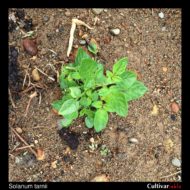 |
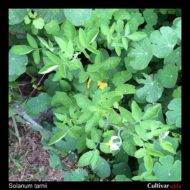 |
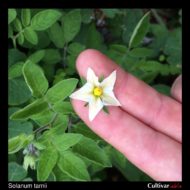 |
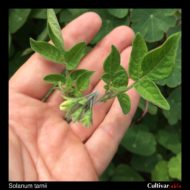 |
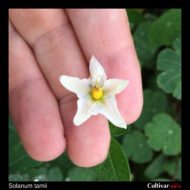 |
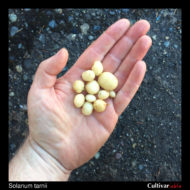 |
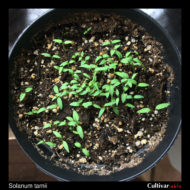 |
|
Cultivation
Breeding
Crosses with S. tuberosum
| Female | Male | Berry Set |
Seed Set | Ploidy | Germ | Source |
|---|---|---|---|---|---|---|
| S. tuberosum (4x) | S. tarnii | None | None | Jackson (1999) | ||
| S. tarnii | S. tuberosum (4x) | None | None | Jackson (1999) | ||
Crosses with other species
Jackson (1999) found that 7-13% of varieties of this species produced 2n pollen, which would be effectively tetraploid and 2EBN.
| Female | Male | Berry Set |
Seed Set | Ploidy | Germ | Source |
|---|---|---|---|---|---|---|
